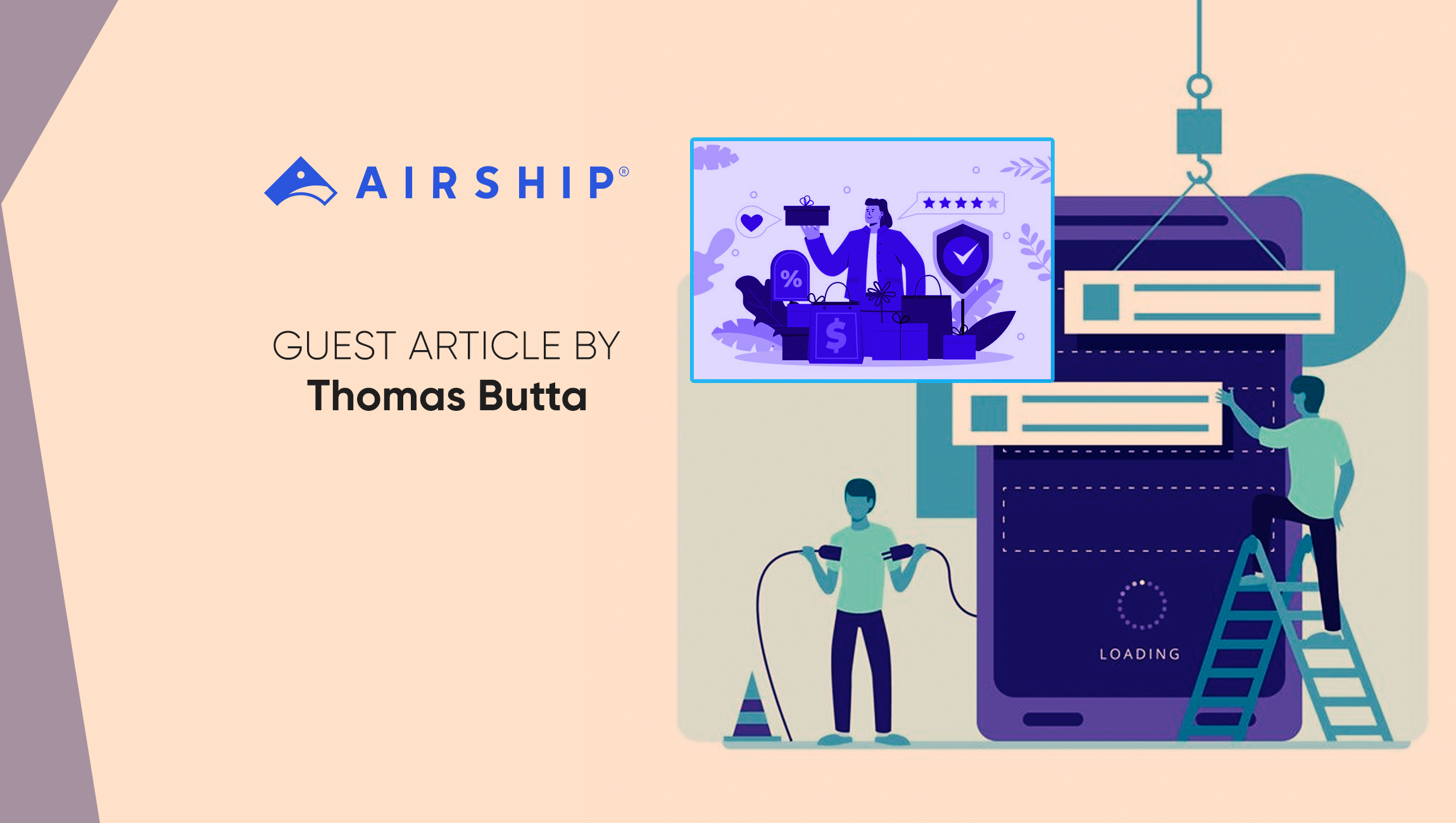Brands that operate mobile shopping apps often experience a flood of new installs during peak shopping periods like Black Friday— and they execute specific strategies to acquire as many new customers as possible. These calendar-driven customer acquisition events are a goldmine for marketers.], however they fail to generate brand loyalty.
That’s because most retailers are struggling to capture long-term value from peak install periods, according to findings from Airship ’s recent research. These annual events represent significant value-creation opportunities, yet they are also costly due to more paid install competition. Forrester describes the challenge facing brands succinctly: “When acquisition costs are high, customer lifespans need a long enough runway to amortise those costs and generate returns. In other words, brands must hold on to newly acquired customers for dear life”.
Black Friday sales are failing to foster long-term loyalty
To understand the scope of this challenge and bring urgency to value-capture efforts, we analysed the mobile app lifecycle and retention data aggregated across more than 60 million new retail apps installed for the first time between October 1 and November 27 (Cyber Monday), 2023.
Our findings showed that Black Friday (November 24) was the top day of the year for customers to install a shopping app — double the daily average rate for October. In fact, Black Friday was the peak install day of the year for more than a decade.
Six of the top seven peak shopping app install days were November 19-25 – this is a much tighter group of dates than in previous years. Compared to October’s weekly average, this peak week saw 40% more app installs. In contrast, five of the seven lowest daily app install days were October 1-7, providing a pre-holiday cohort for comparison.
Our main finding is an alarm bell to marketers everywhere: by week 3 after install, any advantage gained from adding users at the height of Black Friday-related shopping is erased, as peak-week customers go on to average 18% lower weekly retention rates than customers acquired pre-holiday.
These rates plummet even further by week 15: apps retain just 10% of peak-week users, compared to 13% of pre-holiday installers. This three percentage-point difference represents massive potential future value: research by Bain & Company found a 5% increase in retained customers can yield 25-95% more profit.
But why are brands failing to convert Black Friday shoppers into long-term customers?
Our analysis shows that the two cohorts exhibit a similar retention pattern, which indicates that brands are not treating peak-week app customers any differently from pre-holiday customers — despite the holiday frenzy’s urgent, transactional focus. Retailers allow peak-week customers to remain transactionally focused, which is reflected in lower retention rates before Christmas has even arrived. Marketers must face this challenge head-on if they want to retain mobile consumers in the long term.
Marketing Technology News: MarTech Interview with Carlos Aragon, Senior Director, Product Marketing @ Vonage
Retail brands must accelerate consumers through the app lifecycle
What can brands do instead to increase loyalty? They must bear in mind that gaining loyalty is not a destination but an ongoing journey – every interaction can contribute to or detract from a customer’s future loyalty. Each step matters in creating a shopping experience that customers will wish to return to, from initial discovery and onboarding to opt-in and registration, engagement, and rewards.
Brands should focus their efforts on purposefully advancing customers through the mobile app lifecycle — from acquisition to activation, engagement, and loyalty. But what practical steps should they take to achieve this?
First, encourage new app users to register or authenticate so that you can link customer data from previous interactions and across channels to better personalise and orchestrate future interactions. Next, focus on gaining ways to communicate with these newly activated app customers and learn about their preferences and interests. Meanwhile, you should work to increase app traffic primarily by using brand-owned channels — push notifications, email, and SMS — because these are the most direct and measurable.
Marketers must also continually optimise their app’s onboarding experiences and demonstrate value throughout the lifecycle and across channels for each customer segments. By identifying and targeting new users based on their behaviour, they can drive them towards feature adoption experiences, preference centres and data collection flows to progressively better understand their needs.
It’s important to automate communications to customers that are relevant and show value, otherwise they will experience marketing fatigue., testing and experimenting to drive optimisation everywhere. This includesevery message, every journey, every feature and every experience — from the app store listing to how the app itself appears.
Customers for life, not just the holidays
During peak shopping periods around the holidays, customers flock to shopping apps in search of the best deals, to earn rewards and gain exclusive access. However, marketers must acknowledge the limited window of time they have to develop a strong reason for shoppers to keep an app installed on their device and use it regularly. The majority of consumers (57%) use an app just once or twice before deciding to delete it, according to our research. First and second impressions are everything!
But brands must also aspire to serve a higher-level purpose in their customers’ lives. The top two reasons customers continue to use apps are because they “simplify their lives” and “save them time.” Ease and convenience far surpassed deals and loyalty rewards as reasons for ongoing app usage.
Businesses need to boost customer experiences quickly and agilely. With the advent of user-friendly no-code tools, even non-technical teams can now create, launch, and refine premium native app experiences without the need for developer support or cumbersome app store updates. Feature flags serve as guiding posts for marketers and developers, facilitating controlled trials and phased introductions to refine business results and customer interactions. Empowered marketing and mobile product teams can progress from ideation to execution, completing tasks in minutes rather than months, liberating developers to concentrate on pioneering app features, continuous improvements, and quality assurance.
Marketing Technology News: The Intersection of Identity and Innovation in the Connected TV Advertising Revolution











